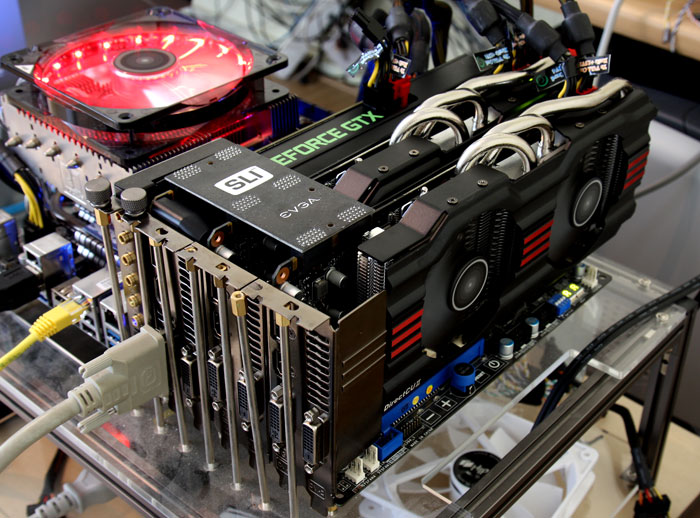Introduction

Hey you .. yes you ! You probably just finished reading the GeForce GTX 670 reference review and figure, SLI ? Hell yeah !
Now if you didn't read the reference review (which in my mindset is obviously impossible), we do recommend that you check that first. There's just lots and lots of info in there explaining the GeForce GTX 670 from an architectural, performance and features point of view. This SLI article however is more like blunt forced trauma to your eyes. Not in-depth on technology, but numbers lots' of them (!).
ASUS submitted their GeForce GTX 670 DirectCU II in two-fold, we add a reference card and that means multi-GPU gaming gangsta style ! This article will cover both single GPU performance, 2-way SLI and even 3-way SLI.
We'll be looking at SLI from a single monitor point of view, so ideally at minimum you need to have a 1920x1200 or 2560x1440/1600 resolution based monitor. Especially if you wan to be able to compare and see what 3-way SLI can do for you on such a setup. Now we have already seen great performance increases with 2-way SLI, but on a single monitor will 3-way SLI scale just as well? -- we don't think so. So that's one of the things we'll be looking for as an answer in today's article.
Over the next few pages we'll tell you a bit about multi-GPU gaming, the challenges, the requirements and of course there'll be a nice tasty benchmark session. We'll have a peek at temperatures and power consumption of the GeForce GTX 670 cards in 3-way SLI mode to monitor its generated performance and look at its handicaps.
But we'll also have a peek at the products being slammed and spanked today straight from the SMT and DIP line of the ASUS manufacturing plant. Yes, these are the ASUS GeForce GTX 670 DirectCU II graphics cards. The cards have the DCUII cooler with four thick heatpipes that are in direct touch with the GPU.
Before we start I do have to note that these cards are the TOP editions, these come factory overclocked pretty intensely towards 1058 MHz on the GPU base clock and a whopping 1137 MHz on the boost frequency. The memory clock remains standard at 6008 MHz btw. So that's factory overclocking galore.
HOWEVER - we'll be downclocking the cards towards reference clock frequencies in this review, to be able to objectively compare performance towards other multi-GPU setups which we always test at reference clocks. So in a separate review we'll have a look at the GTX 670 DirectCU II TOP unique performance.
With that said, let's work our way into the article ya'll -- yeah, I'm getting all ghetto on ya, start up this article.

